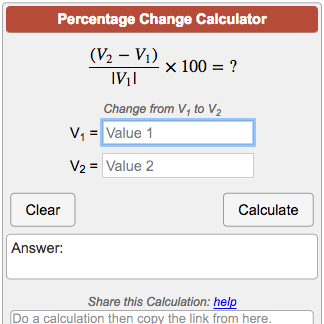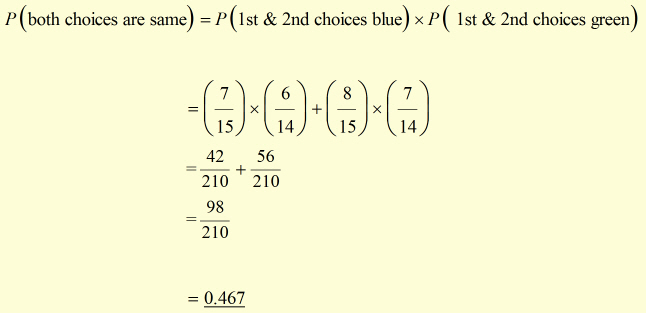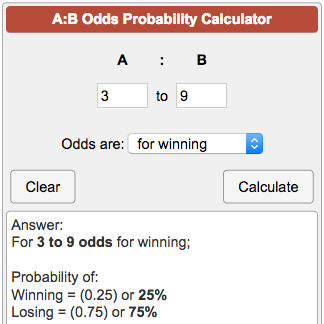

But, if you think about it, we have just worked out the complementary event in the previous problem. Having the same set of dice as above, what is the chance of rolling at most 26? If you were to do it step by step, it would take ages to obtain the result (to sum all 26 sums). The probability of rolling a sum out of the set, not higher than X - the procedure is precisely the same as for the prior task, but we have to add only sums below or equal to the target. In total, there are 20 good outcomes in 1,000 possibilities, so the final probability is: P(X ≥ 27) = 20 / 1,000 = 0.02. As we can see, we have to add all permutations for 27, 28, 29, and 30, which are 10, 6, 3, and 1, respectively. Taking into account a set of three 10-sided dice, we want to obtain a sum at least equal to 27. The probability of rolling a sum out of the set, not lower than X - like the previous problem, we have to find all results which match the initial condition and divide them by the number of all possibilities. Luckily, this isn't the case for our dice probability calculator! As you may expect, as the number of dice and faces increases, more time is consumed evaluating the outcome on a sheet of paper.

The higher the number of dice, the closer the distribution function of sums gets to the normal distribution. We can estimate the probabilities as the ratio of favorable outcomes to all possible outcomes: P(2) = 1/36, P(4) = 3/36 = 1/12, P(12) = 1/36, P(7) = 6/36 = 1/6. Our permutation calculator may be handy for finding permutations for other dice types. The number of permutations with repetitions in this set is 36. It turns out that 7 is the most likely result with six possibilities: 1+6, 2+5, 3+4, 4+3, 5+2, and 6+1. Take a look there is only one way you can obtain 2: 1+1, but for 4, there are three different possibilities: 1+3, 2+2, 3+1, and for 12 there is, once again, only one variant: 6+6. With a pair of regular dice, we can have 2,3,4,5,6,7,8,9,10,11,12, but these results are not equivalent! One approach is to find the total number of possible sums. However, we can also try to evaluate this problem by hand. In our example we have n = 7, p = 1/12, r = 2, nCr = 21, so the final result is: P(X=2) = 21 Where r is the number of successes, and nCr is the number of combinations (also known as " n choose r"). This is where the binomial probability comes in handy. It's somehow different than previously because only a part of the whole set has to match the conditions.

The probability of rolling exactly X same values (equal to y) out of the set - imagine you have a set of seven 12-sided dice, and you want to know the chance of getting exactly two 9s. If we take identical conditions ( s=6, y=3) and apply them in this example, we can see that the values 1, 2, & 3 satisfy the rules, and the probability is: P = (3

The probability of rolling all the values equal to or lower than y – this option is almost the same as the previous one, but this time we are interested only in numbers that are equal to or lower than our target. We want to rolled value to be either 6, 5, 4, or 3. For example, let's say we have a regular die and y = 3. The probability of rolling all the values equal to or higher than y – the problem is similar to the previous one, but this time p is 1/s multiplied by all the possibilities which satisfy the initial condition. And if you are interested in rolling the set of any identical values, simply multiply the result by the total die faces: P = 0.000125 If we consider three 20-sided dice, the chance of rolling 15 on each of them is: P = (1/20)³ = 0.000125 (or P = 1.25♱0⁻⁴ in scientific notation). In other words, the probability P equals p to the power n, or P = pⁿ = (1/s)ⁿ. The probability of rolling the same value on each die – while the chance of getting a particular value on a single die is p, we only need to multiply this probability by itself as many times as the number of dice. There is a simple relationship – p = 1/s, so the probability of getting 7 on a 10–sided die is twice that of a 20–sided die. n – the number of dice, s – the number of individual die faces, p – the probability of rolling any value from a die, and P – the overall probability for the problem. We can distinguish a few, which you can see in this dice probability calculator.īefore we make any calculations, let's define some variables which we'll use in the formulas. Well, the question is more complex than it seems at first glance, but you'll soon see that the answer isn't that scary! It's all about maths and statistics.įirst of all, we have to determine what kind of dice roll probability we want to find.


 0 kommentar(er)
0 kommentar(er)
